
Wind bites your skin, pine and salt air fill your lungs, and the road ahead stretches into the unknown. Every curve promises something unexpected—whether it’s the thrill of isolation or the awe of untouched beauty.
These journeys call to the adventurer within, urging you to leave behind the comfort of the familiar and step into landscapes that stir something deep within. As you drive into the heart of the wild, transformation awaits.
In the following pages, you’ll discover the secrets of road trips that will reshape the way you see the world.
1. Skeleton Coast Route, Namibia

The Skeleton Coast of Namibia, one of the most mysterious and hauntingly beautiful stretches of wilderness on Earth, is a place where the desert meets the sea in an unforgettable display of nature’s power. This isolated region, named for its treacherous, shipwreck-strewn coastline, offers an eerie yet captivating experience. As you drive through the desolate terrain, with the cold Atlantic winds howling and the rugged dunes of the Namib Desert pressing against the horizon, you’ll feel as though you’re journeying through another world. The road is dotted with the remnants of shipwrecks that have succumbed to the unforgiving sea, offering a grim reminder of the raw forces at play.
For those seeking solitude, the Skeleton Coast is the ultimate escape. The vast emptiness of the landscape allows for moments of quiet reflection, broken only by the occasional sight of desert-adapted wildlife, like oryx and desert lions, navigating the harsh environment. The route is sparsely populated, and settlements are few and far between, making it one of the most untamed adventures in the world. The stillness of the surroundings only heightens the sense of adventure, providing an unrivaled feeling of exploration and discovery.
Practical Information
- Peak/Off-peak Seasons: The best time to visit is between May and October, when the weather is cooler and more comfortable for long drives. The off-peak season, from November to March, can be incredibly hot, with temperatures soaring above 100°F (38°C).
- How to Reach: Fly into Windhoek or Swakopmund, then hire a 4×4 vehicle to tackle the rugged roads. A guided tour is often recommended due to the harsh terrain and isolated nature of the route.
- Duration: Plan for 5-7 days to fully experience the Skeleton Coast, allowing time for stops at shipwrecks, desert oases, and wildlife sightings.
- Must-try Local Experiences: Visit the Twyfelfontein rock engravings, a UNESCO World Heritage Site, and explore the eerie remnants of shipwrecks like the Eduard Bohlen and Dunedin Star.
- Budget Considerations: Due to its remote location, the trip can be pricey. Expect higher costs for guided tours, vehicle rentals, and accommodations. Budget around $200-$350 per day.
- Cultural Etiquette: Be respectful of the indigenous communities you may encounter along the way. Stick to established routes and don’t disturb wildlife or their habitats.
- Photography Opportunities: The Skeleton Coast is a photographer’s dream. Capture the stark contrast between the golden dunes and the pitch-black wrecks, or photograph the silhouettes of desert animals against the vast oceanic horizon.
2. Karakoram Highway, Pakistan to China
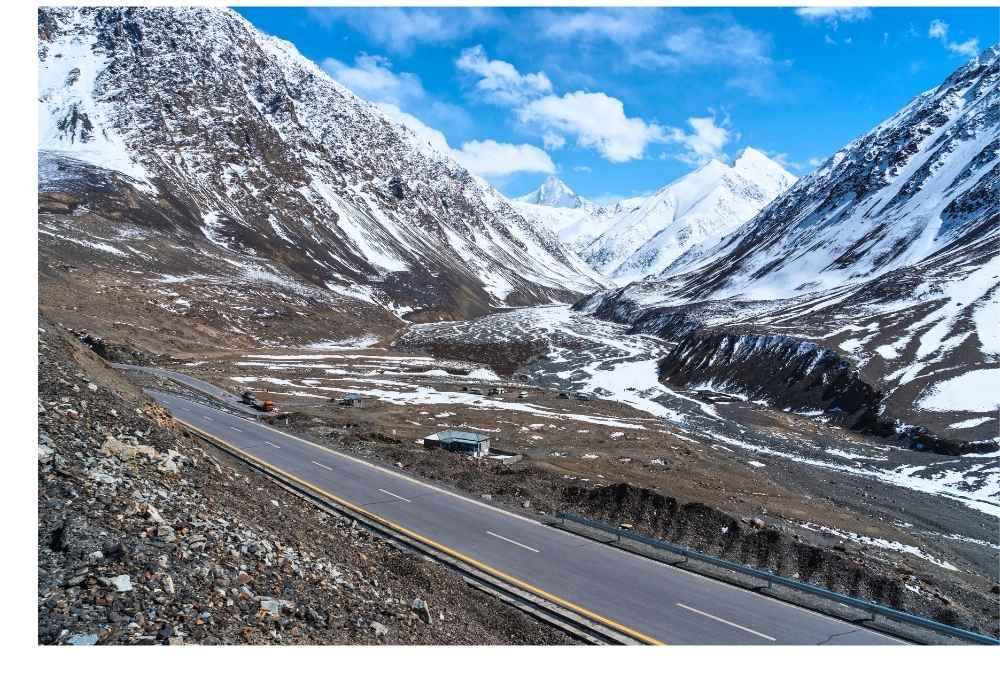
The Karakoram Highway, known as the “Eighth Wonder of the World,” is an epic journey that takes travelers through some of the most breathtaking landscapes on Earth. Winding its way through the Karakoram mountain range, this route links Pakistan to China and offers views that seem otherworldly—towering snow-capped peaks, crystal-clear rivers, and isolated villages nestled between the cliffs. As you drive along the highway, you’ll pass through several ancient trading routes, where history and culture collide in the most spectacular way. This journey is both a physical and mental challenge, as the highway climbs to over 15,000 feet at its highest point, offering not just stunning views but also a deep sense of adventure.
Driving along the Karakoram Highway is like stepping back in time. The ancient Silk Road cities, such as Gilgit and Hunza Valley, give you a glimpse into a way of life that has endured for centuries. The people here, known for their warmth and hospitality, still live in traditional stone houses, growing fruit in the shadow of jagged peaks. The stark beauty of the landscape, with its ever-changing colors, from deep green valleys to snow-covered peaks, offers endless opportunities to immerse yourself in nature’s raw beauty.
Practical Information
- Peak/Off-peak Seasons: May to October is the best time to visit, as the weather is mild and the roads are generally clear of snow and ice. Winter months are harsh and many sections may be closed due to snow.
- How to Reach: Start in Islamabad, Pakistan, and head north to Gilgit, from where the road to China begins. Alternatively, take a flight to Karimabad for the Hunza Valley before starting your road trip.
- Duration: Depending on how far you plan to go, allocate at least 10-14 days for a trip along the Karakoram Highway to truly appreciate the journey and explore the side roads.
- Must-try Local Experiences: Try the traditional Hunza apricots and explore Baltit Fort, a centuries-old fort overlooking the valley.
- Budget Considerations: While traveling along the Karakoram Highway can be affordable, hiring local guides and accommodations in remote areas may add to the cost. Expect a budget of $100-$250 per day, depending on your accommodation choices.
- Cultural Etiquette: Be respectful of local customs and traditions. Always ask permission before taking photos of locals, and be mindful of the distinct cultural practices in these mountainous regions.
- Photography Opportunities: The views are unparalleled; capture the rugged, towering peaks, the serene valleys below, and the colorful villages nestled between. Sunrise and sunset along the road provide stunning lighting for photographs.
3. Pamir Highway, Tajikistan

The Pamir Highway, one of the highest roads in the world, offers a journey unlike any other. As it traverses the Pamir Mountains of Tajikistan, this isolated road will take you through landscapes that feel like they belong to another planet. With towering peaks, high-altitude deserts, and remote villages, the Pamir Highway feels like an expedition into the unknown. Along the way, you’ll encounter ancient ruins, Soviet-era remnants, and the legendary Lake Karakul, where the blue water reflects the surrounding snow-capped mountains, creating a picture-perfect scene.
This is a journey for the intrepid traveler, someone ready to embrace the unknown. The road winds through some of the most challenging terrain, with altitudes over 14,000 feet, and can be treacherous, especially during the winter months. However, the rewards are immense. The Pamirs are home to hardy local communities who live off the land, raising yaks and sheep. These remote pockets of civilization offer an authentic glimpse into a way of life that is as raw as the environment itself.
Practical Information
- Peak/Off-peak Seasons: The best time to visit is between May and October, as temperatures are cooler and the roads are more navigable. Winter brings heavy snowfall, making sections of the highway inaccessible.
- How to Reach: Fly into Dushanbe, the capital of Tajikistan, and take a jeep or shared vehicle to the start of the Pamir Highway. From here, it’s a multi-day adventure to traverse the entire route.
- Duration: 7-10 days is the ideal duration, depending on the length of your journey and the stops you make.
- Must-try Local Experiences: Sample Laghman, a traditional noodle dish, and visit Yamchun Fortress, a well-preserved fortress offering stunning views of the surrounding valley.
- Budget Considerations: This is a budget-friendly trip, with daily costs averaging between $50-$100 for basic accommodations and meals.
- Cultural Etiquette: Tajikistan is a predominantly Muslim country, so be respectful of local customs, especially during Ramadan. Dress modestly, particularly in rural areas.
- Photography Opportunities: The towering peaks, vibrant landscapes, and ancient villages make for jaw-dropping photographs. Don’t miss capturing Lake Karakul or the rugged cliffs of the Pamirs.
4. Route 40 through Patagonia, Argentina
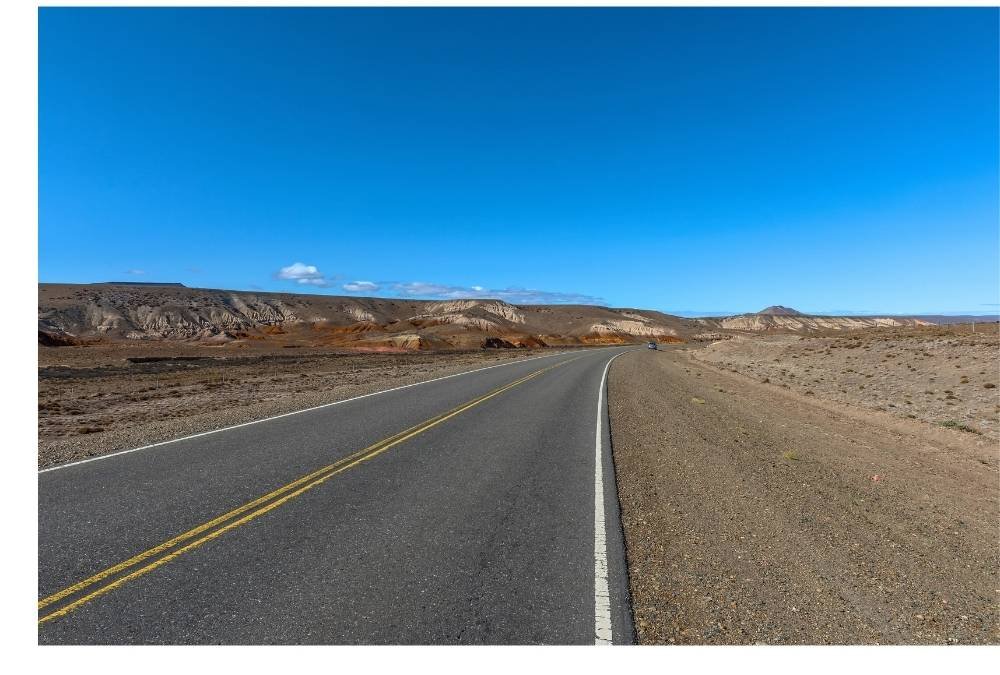
Patagonia, the wild, untamed southern region of Argentina, offers one of the most spectacular road trips in the world. Route 40, also known as Ruta 40, stretches over 3,000 miles and takes you through diverse landscapes, from arid deserts to glacial lakes and snow-capped mountains. Along the way, you’ll encounter towering peaks of the Andes, the flatlands of the Patagonian Steppe, and the famed Perito Moreno Glacier, one of the few glaciers in the world still advancing. As you drive through this vast, isolated region, you’ll feel the pulse of Patagonia’s rugged beauty and harsh yet captivating wilderness.
Patagonia’s charm lies in its isolation and its rugged natural beauty. Stop in quaint towns like El Chaltén and El Calafate, where the locals live close to the land and the mountain views seem to go on forever. The region has a deep sense of wildness, and the roads are often quiet, allowing for reflection and appreciation of the untouched landscapes that surround you. This trip offers a chance to disconnect from the hustle of modern life and immerse yourself in the pristine natural world of southern Argentina.
Practical Information
- Peak/Off-peak Seasons: The peak season runs from December to March, when the weather is warmest, though it’s also the most crowded. April and November are quieter, but weather can be unpredictable.
- How to Reach: Start in Mendoza or Buenos Aires and drive south through Patagonia. The route is well-paved, though some sections in the south can be rough.
- Duration: The full journey takes 7-14 days, depending on how much time you spend exploring the towns and natural landmarks.
- Must-try Local Experiences: Visit the Perito Moreno Glacier to see the massive ice calving, or try Patagonian lamb, a local delicacy.
- Budget Considerations: Patagonia is affordable by international standards, with costs ranging from $80-$150 per day for accommodation, food, and fuel.
- Cultural Etiquette: While the region is laid-back, respect local customs by asking before taking photos, especially in rural areas. Be mindful of the environment and leave no trace.
- Photography Opportunities: The endless vistas of rugged mountains, lakes, and glaciers are perfect for panoramic shots. Don’t miss the Fitz Roy mountain range or the wild Estancia ranches.
5. Dempster Highway, Canada (Yukon to Arctic Ocean)
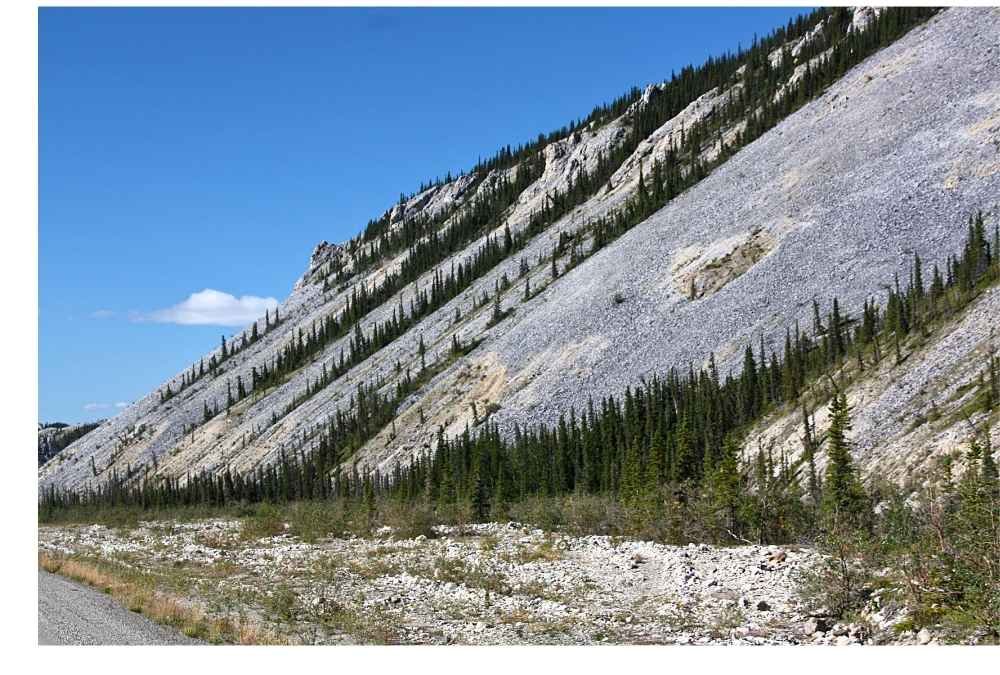
The Dempster Highway offers a thrilling drive into the wild northern reaches of Canada, connecting the Yukon to the Arctic Ocean. The road stretches 456 miles through pristine wilderness, passing towering mountain ranges, expansive tundra, and rugged terrains rarely seen by the average traveler. As you drive, the landscape evolves from boreal forests to windswept plains, with few signs of human life, making it an adventure unlike any other. The isolation of the route, combined with the untamed beauty of the land, creates an atmosphere that feels both challenging and exhilarating.
Traveling along the Dempster Highway is an unforgettable journey for those with a love for nature and solitude. You’ll experience the thrill of crossing into the Arctic Circle, a place where the sun barely sets in summer, and the night sky in winter is illuminated by the Northern Lights. Along the way, you might encounter wildlife like caribou, grizzly bears, and wolves, adding a sense of wild adventure to the trip. The remote communities you pass through, like Tuktoyaktuk, offer rare glimpses into life at the top of the world.
Practical Information
- Peak/Off-peak Seasons: The best time to visit is June to September when the weather is milder, and the roads are passable. Winter conditions can be extremely harsh, making the road treacherous.
- How to Reach: The starting point is Whitehorse, in the Yukon, from where you can rent a vehicle for the road trip.
- Duration: Allow at least 5-7 days to complete the journey, allowing for stops in remote villages and time to take in the wild scenery.
- Must-try Local Experiences: Experience the Midnight Sun in summer or witness the Northern Lights in winter. Visit Tuktoyaktuk and dip your toes into the Arctic Ocean.
- Budget Considerations: Expect costs of around $100-$150 per day for accommodations, food, and vehicle rentals. Gas stations are sparse, so keep an eye on fuel.
- Cultural Etiquette: Be respectful of the indigenous communities along the route, and always ask before taking photographs. Make sure to follow environmental guidelines to preserve the pristine landscapes.
- Photography Opportunities: The dramatic landscapes of tundra, mountains, and the Arctic coastline provide perfect shots. Capture the ever-changing light, wildlife, and stark beauty of the area.
6. Gibb River Road, Western Australia
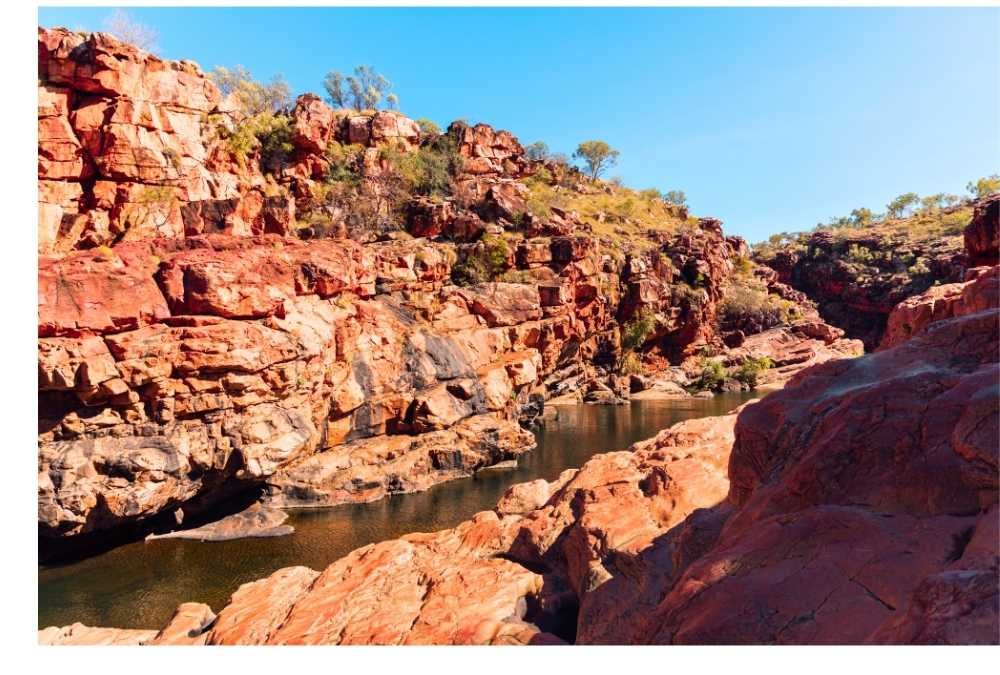
There’s a wild beauty to Gibb River Road, an ancient path that cuts through the heart of Kimberley in Western Australia. As one of the most remote and rugged routes in the country, it provides an untamed adventure. Most visitors are unaware of the region’s deep cultural significance to the Bunjima, Yugunga-Nya, and Gooniyandi peoples, whose stories and ancestral lands echo through the rugged hills and vast plains. Along the Gibb, ancient gorges like Bell Gorge reveal lush waterfalls cascading into emerald pools, while the vast, red earth landscapes contrast with the vibrant green vegetation that thrives in the wet season. The road is a timeless connector between towns, offering travelers a glimpse into some of the world’s most isolated communities.
What makes Gibb River Road so special is the sense of immersion into a landscape that hasn’t changed for centuries. The only sounds are the crunch of gravel under tires and the occasional call of native birds. Its remote nature offers a rawness that’s hard to find elsewhere. For those ready for adventure, the road feels like a portal into another world, one where time slows down, and each mile travelled feels like it is carving its own memory.
Practical Information
- Best Time to Visit: The peak season runs from May to September when temperatures are milder and the road is accessible. The off-season from October to April sees the region hit by monsoon rains, making parts of the road impassable.
- Accessibility: Broome is the most common starting point. Renting a 4×4 vehicle is essential, and the journey requires preparation, especially when traveling off the beaten path.
- Duration: A week-long trip is ideal, allowing time to explore gorges, waterfalls, and Aboriginal cultural sites.
- Budget Considerations: A day on the Gibb River Road can cost between $100-$200 for fuel, accommodation, and food. Remote campsites and lodges can be pricey, so plan accordingly.
- Must-See: Stop at Windjana Gorge and Tunnel Creek, where you can explore hidden caves and ancient rock formations.
- Cultural Etiquette: Be respectful of Aboriginal sites and follow all guidelines. Many areas are sacred, and permission should be sought before exploring them.
- Photo Opportunities: The road’s dusty red landscape juxtaposed with the lush gorges and clear waters makes for some of Australia’s most iconic photos.
7. Transfăgărășan Highway, Romania

The Transfăgărășan Highway winds through the Carpathian Mountains of Romania, offering a thrilling journey that feels more like a roller-coaster ride than a scenic drive. It’s a place where sharp turns and vertiginous drops greet you around every corner, and stunning mountain vistas constantly unfold before you. What makes this road so unique is the way it cuts through the heart of Transylvania, leading travelers past dramatic views of rugged peaks, deep valleys, and alpine lakes like Bâlea Lake. It’s not just a road—it’s an experience.
Aside from the views, what makes the Transfăgărășan memorable are the Bucegi Mountains, the Poenari Castle, and the eerie Cârțișoara Tunnel, an abandoned military structure frozen in time. It’s a mixture of adventure, history, and mystery that pulls travelers in. At the summit, the icy wind and steep slopes make you feel alive in a way that only the wilderness can. The road demands respect, offering challenges but rewarding those who brave it with some of the most dramatic landscapes you’ll encounter anywhere.
Practical Information
- Best Time to Visit: The route is open from June to October, with the best weather for driving occurring in late summer. The rest of the year, snow and ice close the highway.
- How to Reach: Start your journey from Bucharest or Sibiu and head towards Curtea de Argeș. The drive to the top requires a solid vehicle and some nerve, as the road is narrow and winding.
- Duration: The drive can take a full day if you plan on exploring the stops along the way, including Poenari Castle and the mountain lakes.
- Budget Considerations: The trip is relatively affordable, with costs running between $50-$100 per day for accommodation, food, and car rentals. The castle tours and lakeside stops may add to the cost.
- Must-See: Don’t miss a visit to Poenari Castle, the ancient fortress where Vlad the Impaler, the inspiration for Dracula, once ruled.
- Cultural Etiquette: Romanians are proud of their rich history. Be respectful at historical sites and always follow posted signs and instructions.
- Photo Opportunities: The Bâlea Lake at the base of the Transfăgărășan offers a mirror-like reflection of the mountains, perfect for dramatic shots. Capture the winding road from above for a bird’s eye view of the route’s serpentine twists.
8. Ring Road, Iceland (Full Loop)
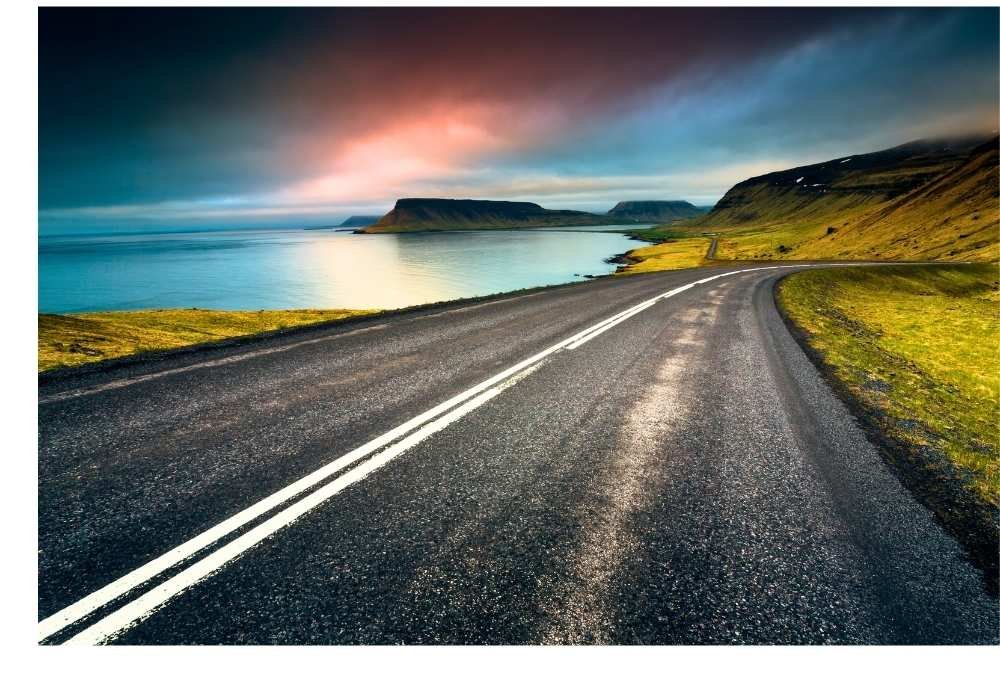
Iceland’s Ring Road is more than just a way to get around—it’s a journey through a living, breathing planet. As you drive along this circular route, you’ll encounter landscapes that could easily be mistaken for something out of a science fiction movie. From geothermal springs to glaciers, volcanoes, and black-sand beaches, the Ring Road provides a front-row seat to the geological forces shaping the Earth. In the summer months, the midnight sun casts a golden hue over the dramatic landscape, turning even the most mundane roadside stop into a magical moment.
However, it’s not just the beauty of the road that stands out. It’s the sense of isolation. The towns and villages are sparse, giving the drive a sense of intimacy with the land. If you’re lucky, you might witness a stunning sunset over the Jökulsárlón glacier lagoon, or stumble upon a waterfall like Skógafoss, where the mist creates rainbows in the sunlight. The Viking history of Iceland also calls to travelers, offering plenty of cultural stops along the way, including ancient sites like Þingvellir National Park, the cradle of Iceland’s first parliament.
Practical Information
- Best Time to Visit: May to September offers the best weather, with warmer temperatures and longer days. Winter months bring cold and unpredictable conditions, but the Northern Lights are a major draw.
- How to Reach: Arriving via Reykjavik is the best option, as it’s the gateway to the island’s attractions. Renting a car is essential for flexibility, but you could also consider guided tours.
- Duration: The entire loop can take 7-10 days to fully appreciate, especially with time for hiking and exploring natural wonders.
- Budget Considerations: Iceland can be expensive. Expect to spend $150-$250 per day, depending on accommodations, car rentals, and food choices. Consider cooking meals to save on costs.
- Must-See: The Blue Lagoon for a relaxing soak and the Gullfoss waterfall, one of Iceland’s most iconic sights.
- Cultural Etiquette: Icelanders are welcoming and proud of their cultural heritage. When visiting sacred sites, be sure to respect local customs and avoid littering in natural spaces.
- Photo Opportunities: Iceland is a photographer’s dream—capture the Seljalandsfoss waterfall, the glowing black beaches of Vik, and the surreal Vatnajökull Glacier.
9. Highway 1 through Big Sur, California, USA
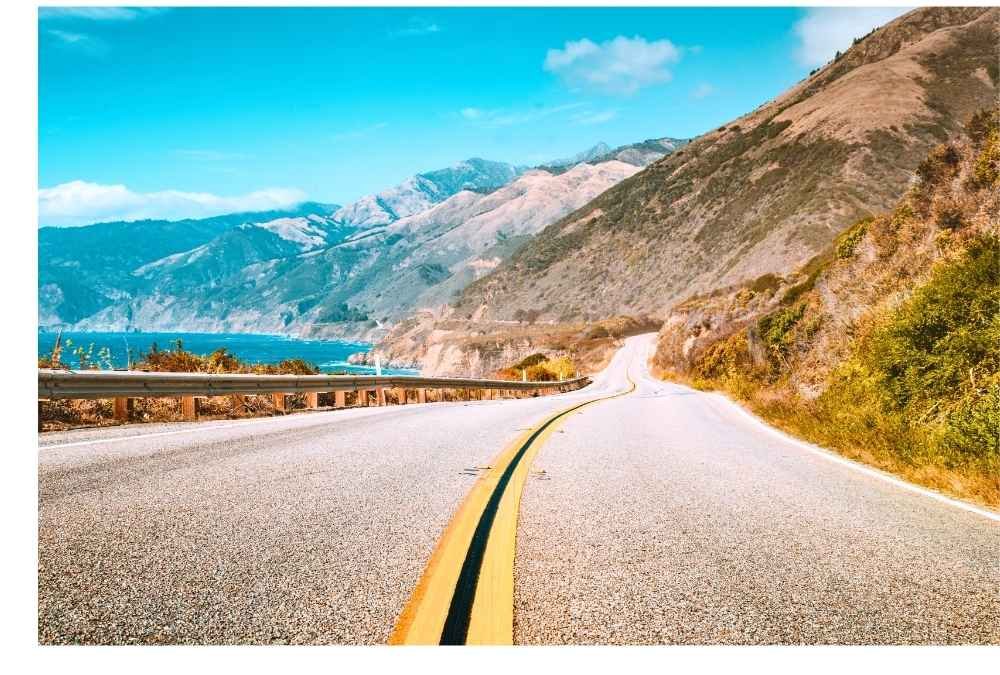
There’s a reason Highway 1 along Big Sur is considered one of the most stunning coastal drives in the world. The road winds along the jagged cliffs of California’s rugged coastline, with the Pacific Ocean on one side and towering redwoods on the other. It’s not just the jaw-dropping beauty of the views that make this route unforgettable, but the palpable sense of serenity you experience as you drive through some of the most remote parts of California. Bixby Creek Bridge, one of the most photographed locations on the route, offers a panoramic view of the Pacific crashing against the rocks below, making it the ideal stop for a photo op.
As you move further along the coast, the towering Pfeiffer Big Sur State Park offers hiking trails through dense, ancient forests. The winding curves of the road lead to secluded beaches like McWay Falls, where waterfalls cascade directly onto the sand, creating a surreal, dreamlike scene. Highway 1 provides the perfect blend of nature and solitude, making it one of the few places in California that feels truly untouched by modern development.
Practical Information
- Best Time to Visit: May to October offers the best weather for a comfortable drive, with less fog and warmer temperatures. Winter months bring rain and cooler conditions.
- How to Reach: Start in Monterey or Carmel-by-the-Sea, and follow the Pacific Coast Highway south toward San Simeon. The route is accessible by car, with plenty of pull-offs for scenic views.
- Duration: The trip can be done in 1-2 days, but to really soak in the sights and hike the trails, spend at least 3-4 days in the area.
- Budget Considerations: Expect to spend $100-$200 per day, depending on where you stay. Camping is an affordable option, while luxury accommodations and dining will cost more.
- Must-See: Visit McWay Falls and Pfeiffer Beach, and take time to explore the Bixby Creek Bridge and the Big Sur River Gorge.
- Cultural Etiquette: Respect the land by leaving no trace when hiking or visiting beaches. Always clean up after yourself, especially in natural areas like Point Lobos.
- Photo Opportunities: The Bixby Creek Bridge, the dramatic cliffs, and the crashing waves of the Pacific all provide stunning opportunities for photography.
10. Garden Route, South Africa
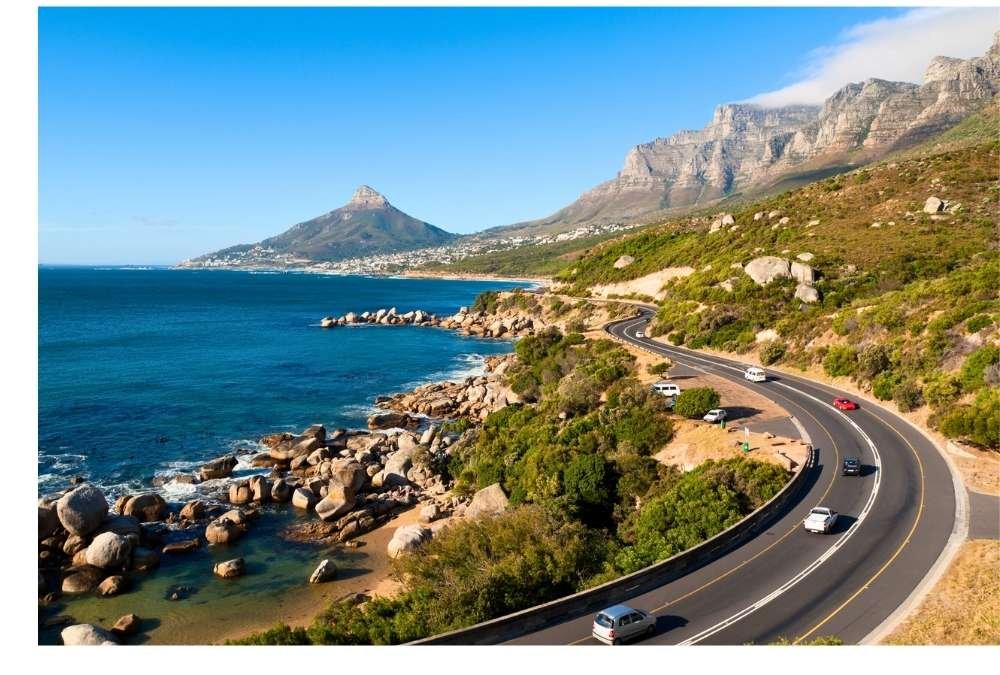
South Africa’s Garden Route is a journey of contrasts—lush forests, golden beaches, rugged cliffs, and quaint seaside towns. Stretching between Mossel Bay and Storms River, this route takes travelers through some of the country’s most diverse and dramatic landscapes. The Garden Route is often described as a “nature lover’s paradise,” where you can experience everything from hiking through Tsitsikamma National Park to spotting whales in Plettenberg Bay. It’s the perfect escape for those seeking adventure with a side of relaxation, offering activities like bungee jumping off Bloukrans Bridge or taking a leisurely walk along pristine beaches.
But beyond the natural beauty lies an experience of authentic local life. The charming towns that dot the route, like Knysna and George, are filled with vibrant markets, boutique shops, and restaurants offering locally sourced food. It’s a place where you can unwind, explore, and truly connect with the rhythm of South Africa’s coast.
Practical Information
- Best Time to Visit: The best months to visit are November to April, when temperatures are warm and the weather is pleasant. Avoid the winter months (June-August), as it’s cold and rainy.
- How to Reach: Cape Town is the easiest starting point, from where you can rent a car and follow the coast. Alternatively, you can fly to George or Port Elizabeth.
- Duration: A 4-5 day trip will allow for a leisurely drive, with time for local hikes, beach days, and visits to wildlife reserves.
- Budget Considerations: Costs are relatively affordable, with budget accommodations ranging from $60-$100 per night. Activities like safaris and adventure sports can push the cost to $150 per day.
- Must-See: Visit Knysna Lagoon, Robberg Nature Reserve, and Tsitsikamma National Park for hikes through pristine forests.
- Cultural Etiquette: Respect the local communities, particularly indigenous groups. Always ask for permission before photographing people and be mindful of the environment.
- Photo Opportunities: The towering cliffs, golden beaches, and lush forests create picture-perfect backdrops. Capture the sweeping coastal views at Storms River Mouth or photograph wildlife at Plettenberg Bay.
11. Great Ocean Road, Victoria, Australia

While the Great Ocean Road is famously known for its towering limestone formations, like the iconic Twelve Apostles, the true magic lies in the unexpected gems scattered along the route. One such treasure is Johanna Beach, often overlooked by tourists rushing to the well-trodden path of the Apostles. This remote beach, framed by lush hills and towering cliffs, offers solitude and untouched beauty, making it perfect for a peaceful coastal retreat. Another lesser-known marvel is the Otway Rainforest, where you can take a tranquil walk among towering ferns and ancient trees, feeling like you’ve stepped into a primeval world far from the crowds.
For a unique perspective of the Twelve Apostles, avoid the midday crowds and aim for a sunrise visit. The soft light of dawn casts a magical glow over the cliffs, and you may even have the entire view to yourself, aside from the occasional seabird flying by. If you’re after adventure, consider walking along the Great Ocean Walk, which follows the coastline from Apollo Bay to Glenample Homestead, offering panoramic views of cliffs, beaches, and waterfalls.
Practical Information
- Best Time to Visit: Spring and early autumn (September-November and March-May) offer mild weather and fewer crowds. Summer can be busy, especially around the Twelve Apostles.
- How to Reach: Start in Melbourne, a 1.5-hour drive from the city. Rent a car for the ultimate flexibility, or join a guided tour for insights along the way.
- Duration: The full 243-kilometer drive can be done in a day, but 2-3 days will allow you to enjoy the attractions and hidden gems at a leisurely pace.
- Must-See: Apart from the Twelve Apostles, stop by Loch Ard Gorge and Port Campbell National Park for dramatic coastlines and secret caves.
- Budget Considerations: Expect to spend between $80-$150 per day for accommodation, meals, and car rentals.
- Cultural Etiquette: Respect the environment and indigenous sites along the route. Always follow signage, especially near the cliffs, to avoid accidents.
- Photo Opportunities: The cliffside views of Twelve Apostles during sunset or sunrise are a must, and Loch Ard Gorge offers unique framing for shots of the coast.
12. Atlantic Ocean Road, Norway

The Atlantic Ocean Road, which stretches across tiny islands and bridges off the Norwegian coast, is famous for its wild beauty and dramatic landscapes. While the road itself is an engineering marvel, a hidden gem awaits at Grip Island, a small, uninhabited fishing village only accessible by boat. Here, you can experience the authenticity of Norwegian coastal life, walking among ancient wooden houses, and enjoying uninterrupted views of the Atlantic’s ever-changing moods. The Kvernes Stave Church, located near the road’s beginning, is another unexpected discovery, offering a rare glimpse into Norway’s medieval past.
For a truly immersive experience, take a boat tour around the islands along the road. This allows you to see the intricate network of coastal routes from the water, which is a completely different perspective than the road offers. If you’re into fishing, try your hand at the local craft near the village of Averøy, where you can learn about the region’s fishing heritage. The Hustadvika bay, infamous for its rough seas, offers an eerie yet awe-inspiring view, especially when the weather is particularly wild.
Practical Information
- Best Time to Visit: May to September is the optimal period, when the weather is mild, and you can experience the midnight sun in the summer months.
- How to Reach: Start from Molde or Kristiansund, and rent a car to explore the road at your own pace.
- Duration: The road can be completed in about 2-3 hours, but taking 1-2 days allows time to explore the islands, churches, and towns along the way.
- Must-See: The Storseisundbrua Bridge is the most iconic part of the road, and the Grip Island and Kvernes Stave Church are off-the-beaten-path highlights.
- Budget Considerations: Norway can be expensive, but a day on the road could cost around $100-$150, depending on car rental, meals, and fuel.
- Cultural Etiquette: Respect local communities, especially in smaller villages. Ask for permission if you want to photograph people or private properties.
- Photo Opportunities: Capture the wild waves crashing against the bridges, the iconic serpentine curves of Storseisundbrua, and serene shots of Grip Island’s fishing houses.
13. Mae Hong Son Loop, Thailand

Thailand’s Mae Hong Son Loop offers much more than just scenic drives; it’s an immersive journey into the heart of northern Thailand. Beyond the stunning mountain views, you’ll find Pai, a small town that’s known for its laid-back vibe and vibrant night markets. However, an unexpected gem along this route is Soppong, a lesser-known village with incredible cave systems that are perfect for those seeking solitude and adventure. The caves, like Tham Lot, are surrounded by untouched forests and offer a rare look into the natural beauty of the region.
The Mae Hong Son Loop is as much about the journey as it is about the destination. Stop at the Shan villages along the way, and don’t forget to explore the lesser-known Doi Inthanon National Park, which offers cooler climates and incredible trekking paths, with views that will take your breath away. If you’re into local culture, visit Wat Chong Kham in Mae Hong Son town to witness a serene Buddhist experience, away from the crowds.
Practical Information
- Best Time to Visit: The best months are November to February, when the weather is cooler and more comfortable for long drives through the mountains.
- How to Reach: Start in Chiang Mai and rent a motorcycle or car to make the loop. The route is mostly paved but be prepared for some narrow, winding mountain roads.
- Duration: It’s best to allow 4-5 days for the loop, giving you time to stop in small towns, hike, and explore local attractions.
- Must-See: The Pai Canyon offers sweeping views of the valleys below, and the Doi Inthanon National Park is a peaceful respite with its waterfalls and trails.
- Budget Considerations: Thailand is very affordable. You can expect to spend between $30-$60 per day on food, accommodation, and transportation.
- Cultural Etiquette: Thailand is conservative, so always dress modestly, particularly when visiting temples. Be mindful of local customs and always show respect to monks.
- Photo Opportunities: The lush mountain landscapes, unique caves of Soppong, and picturesque sunsets over Pai make for perfect photo opportunities.
14. Wild Atlantic Way, Ireland
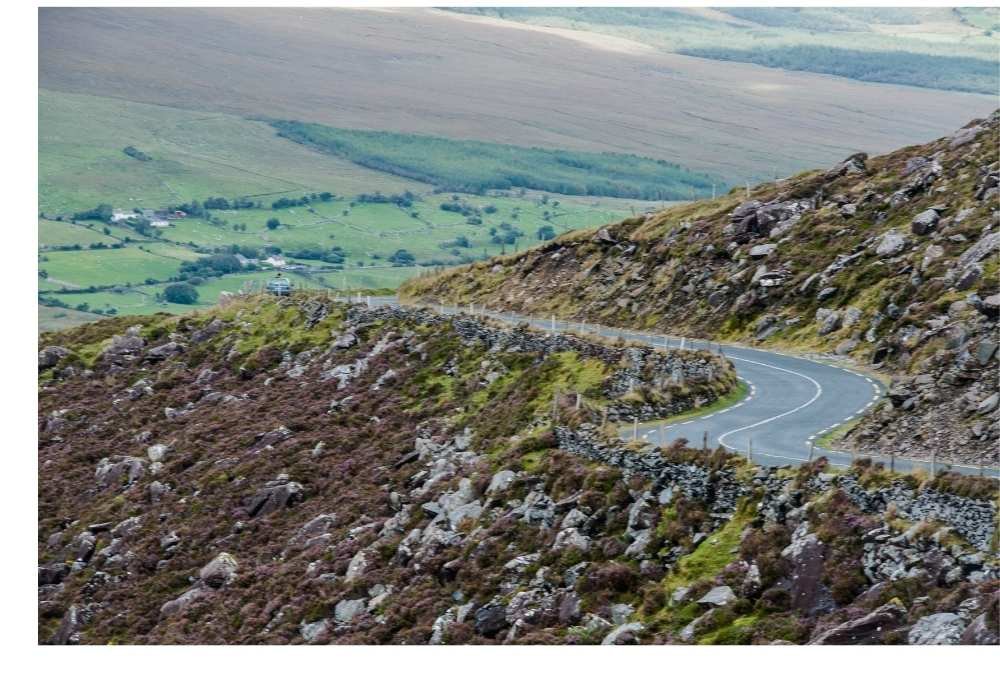
Ireland’s Wild Atlantic Way is a road trip like no other, stretching along the rugged western coast from Donegal to Cork. While the major tourist spots like Cliffs of Moher are undoubtedly awe-inspiring, the hidden gems along this route truly make the journey unforgettable. Achill Island, with its wild, wind-swept beauty, is often missed by tourists. Here, you can wander through dramatic cliffs, sandy beaches, and abandoned cottages, feeling the pulse of nature at its rawest. Another gem is Dingle Peninsula, where you can explore ancient ruins, sandy shores, and take a boat ride to spot playful dolphins in Dingle Bay.
To get the most out of the Wild Atlantic Way, leave the main road behind and explore its hidden inlets and quaint villages. Westport, with its charming pubs and vibrant community, offers a taste of traditional Irish hospitality. For those into history, Ringforts in County Kerry or the Keem Bay on Achill Island will provide a unique glimpse into ancient Celtic life and coastal defenses. For a truly local experience, head to Blasket Islands and hear the stories of Ireland’s most isolated communities.
Practical Information
- Best Time to Visit: The summer months (May to September) offer the best weather for the trip, although it can still be cool and rainy. Spring and fall are quieter and provide a more serene experience.
- How to Reach: Start in Donegal, or Galway if coming from the south. Renting a car is essential to fully appreciate the route at your own pace.
- Duration: The full route stretches over 2,500 kilometers, and it’s best to give yourself 7-10 days to explore it properly.
- Must-See: Visit Cliffs of Moher, Ring of Kerry, and take a ferry to Blasket Islands for a glimpse into Irish life centuries ago.
- Budget Considerations: Expect to spend around $100-$150 per day depending on your accommodation choices, food, and the attractions you visit.
- Cultural Etiquette: Respect the Irish countryside by sticking to designated paths and avoiding littering. Local pubs and villages welcome tourists, but always show appreciation for local traditions.
- Photo Opportunities: Capture the wild beauty of Cliffs of Moher, the rugged coastline of Dingle Peninsula, and the peaceful sunsets over Achill Island.






